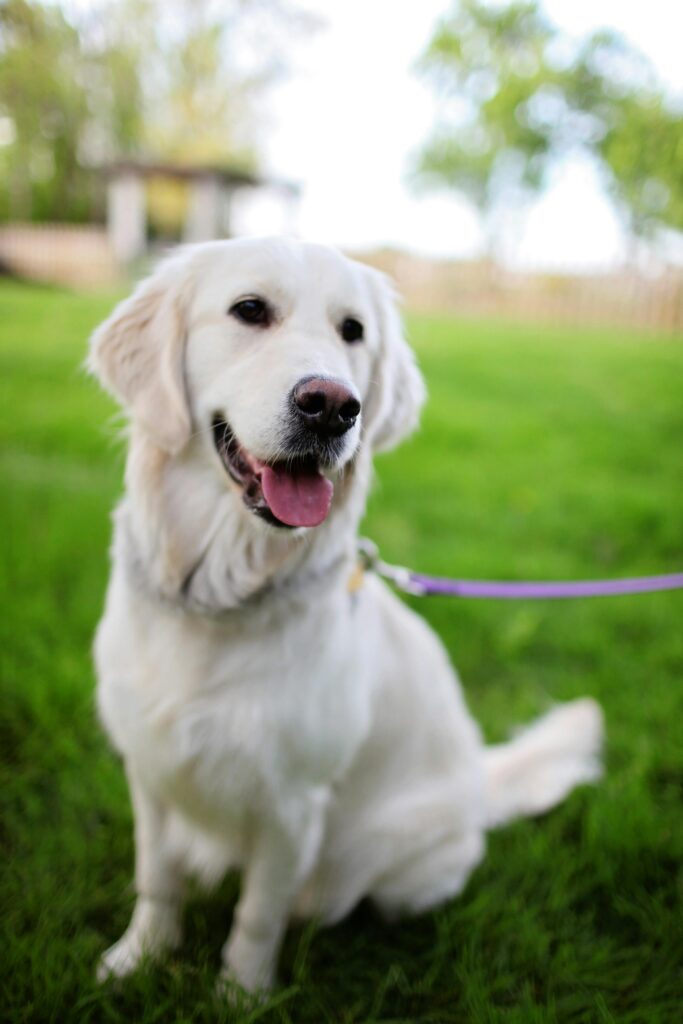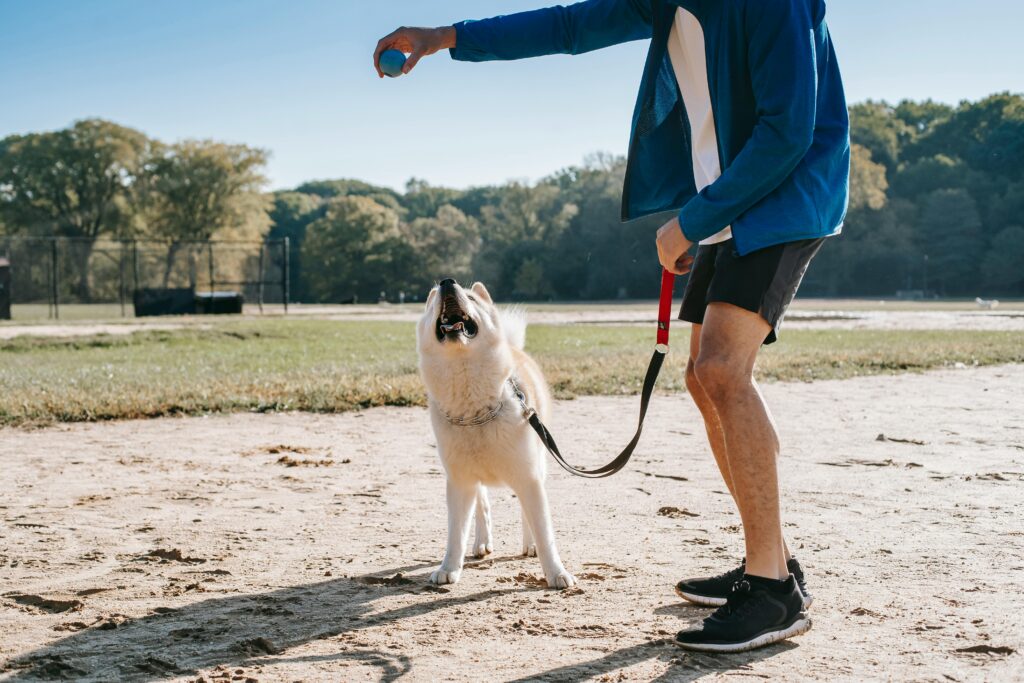Fall in Chicago is the perfect season for long walks, cool-weather hikes, and park adventures with your dog. But if your pup pulls, zigzags, or lunges at distractions, those outings can quickly turn into a frustrating experience. Loose leash walking is one of the most essential and overlooked obedience skills, and it makes a world of difference when you’re exploring outdoors.
Whether you’re prepping for apple orchard strolls, lakeside hikes, or weekend farmer’s markets, now is the time to fine-tune your dog’s leash skills. In this guide, we’ll show you how to build reliable loose leash behavior, step by step.

What Is Loose Leash Walking?
Loose leash walking means your dog walks politely beside you with a slack leash. They aren’t pulling ahead, lagging behind, or darting from side to side. This is different from the formal “heel” command, which requires precision and focus. Loose leash walking is more relaxed but still structured.
It allows:
- Comfortable movement for both dog and handler
- Greater freedom while still maintaining control
- Calm, safe navigation of busy environments
Why Fall Is the Best Time to Practice
Fall offers the ideal conditions for training walks:
- Mild temperatures reduce fatigue and heat-related stress
- More people are out with their dogs, creating training opportunities
- Nature trails and neighborhoods are full of distractions that help reinforce obedience
Teaching leash manners before fall adventures means fewer headaches when you’re out enjoying the season.
Start With the Right Equipment
Before you begin, make sure your setup sets you up for success:
- Use a 4 to 6-foot non-retractable leash
- Choose a properly fitted collar or training tool suited for your dog
- Carry high-value treats or a toy for rewards
- Start in low-distraction areas like your backyard or quiet streets
Avoid harnesses that clip on the back, as these often encourage pulling. For tips on selecting the right walking tool, check out this helpful AKC comparison of collars versus harnesses.
Establish the Rules Early
From the first step of the walk, your dog should know what’s expected. Start with a calm sit at the door. Once they’re composed, step out first and begin the walk. If your dog starts pulling:
- Stop walking immediately
- Wait for slack in the leash
- Mark and reward when your dog returns to your side
Consistency is key. Every time your dog pulls and gets to move forward, they’re being rewarded for bad behavior. You need to break that habit.
Make Yourself Worth Following
Loose leash walking isn’t just about mechanics, it’s about engagement. You need to be more interesting than the squirrel, the smell, or the person across the street.
Use:
- Verbal praise and quick treats for walking nicely
- Direction changes to keep your dog checking in with you
- Sudden stops or turns if they zone out
If your dog is disengaged, it’s time to practice focus first. Our guide on how to train focus around distractions shows you how to keep their attention, even in stimulating environments.
Build Up to Busier Routes
Once your dog walks well in quiet areas, gradually add distractions:
- Other dogs or people nearby
- Biking trails
- Park environments with food and noise
Don’t rush it. Reward every small success. If your dog struggles, go back to easier settings until they’re more confident. Just like any skill, loose leash walking improves with practice and positive reinforcement.
Troubleshooting Common Issues
Pulling to sniff everything:
Designate short “sniff breaks” where your dog is allowed to explore. Use a release word like “free” so they know when it’s okay.
Lunging at dogs or people:
Create space and redirect attention before your dog reaches the trigger. Use treats to guide them into a calm sit or change direction quickly.
Lagging behind or refusing to move:
Check that your dog is comfortable with their gear. Use upbeat tones and movement to re-engage. Puppies or nervous dogs may need more encouragement early on.
Reinforce at Every Stage
Even once your dog walks beautifully on leash, don’t stop rewarding. Keep it fun, varied, and interactive. Loose leash walking is a lifelong habit, not a one-time lesson.
If you’re struggling with reliability, our Basic & Advanced Obedience Program teaches structured walking, engagement, and real-world reliability in just a few sessions.
When to Seek Professional Help
If your dog:
- Pulls nonstop despite training
- Reacts aggressively on leash
- Is fearful or shuts down on walks
- Doesn’t respond to commands outdoors
It may be time to bring in a trainer. Professional guidance can pinpoint where communication is breaking down and give you the tools to move forward.
At Off Leash K9 Training Chicago, we’ve helped hundreds of dogs and owners achieve calm, controlled walks no matter the environment. The difference isn’t just obedience, it’s peace of mind.
Final Thoughts
Loose leash walking opens the door to a lifetime of adventures. From scenic trails to city strolls, your walks should be enjoyable, not exhausting. Start with clear expectations, build engagement, and increase difficulty gradually.
Fall is right around the corner, and it’s the perfect time to create better walking habits for both you and your dog.
Ready to enjoy stress-free walks before the leaves change?
Contact our Chicago team today to schedule your personalized training plan.

